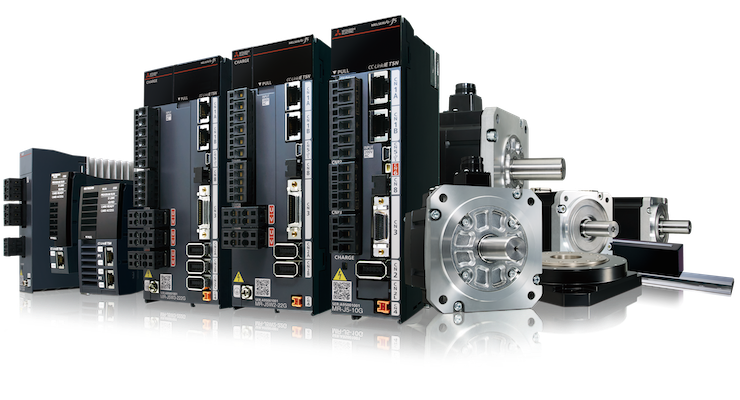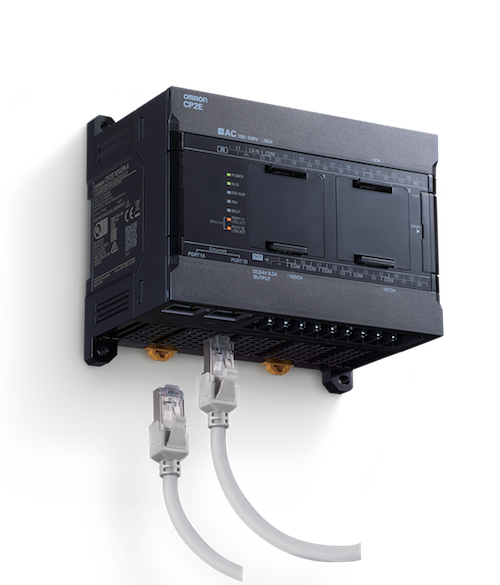The controllers available today to design engineers have more built-in functions, are more powerful, and are being used in a wide array of diverse applications. We asked some of the top controls manufacturers what trends they’re seeing in the industry. Here’s what they told us.
Do you see automation controllers in any new uses? Where do PLCs endure and where are they yielding to PLC functions onboard other controller options?
Mitsubishi Electric
Lee Cheung, Product Marketing Engineer
Some of our OEM partners are investing in new machine-as-a-service business models, using cloud technologies enabled by our IoT Gateway product. End users are beginning to see how the technology can help them reduce overall costs by lowering the upfront capital cost and providing a plan for predictable operational costs.
The choice of which technologies to adopt depends on where the customer wants to be today, and where they want to grow into 5, 10, 15 years from now. Certainly, you can go from none to all the IoT capability you want, or you can start small and grow into it. It becomes a question of your specific goal for your IoT project, what kind and how much data do you want to collect, and what is the most efficient way to do it.
Omron
Carrie Lee, Product Manager – Controllers at Omron Automation Americas
Our Sysmac controllers are being used more and more for data collection thanks to their connectivity to open protocols that simplify the process of securely gathering meaningful data from the plant floor. Instead of yielding to PLC functions onboard other controller options, the Sysmac platform is increasing the number of technologies under its umbrella. With the recent incorporation of robot controls into Sysmac controllers, the Sysmac platform continues to expand the disciplines of automation that it contains.
How has the Internet of Things (IoT) and the Industrial IoT impacted controller design and functionality?
Mitsubishi Electric
Lee Cheung, Product Marketing Engineer
We have several products and functions that allow our customers to immediately capitalize on the benefits of IoT. At a high level, IoT is about the networking of devices for interconnectivity and the ability to get data. A very simple IoT system would be at the field level. Connectivity starts with Ethernet onboard controllers, and should include very easy networking functions for communication between field level devices. That allows PLCs to talk to each other and communicate to and control other devices on the network. Some field devices now have built-in PLC functions, like our own line of VFD products including our newest FR-E800 series micro drives, which enhance the functionality of individual drives and complement traditional PLCs very well. You can get additional benefits when the PLC includes a web server like our iQ-R and iQ-F series controllers. Web servers allow any connected device with a web browser, like a smartphone or PC, to quickly access maintenance data without any special software. Our GOT2000 series HMIs with the GOT Mobile feature also offer the same functionality and more, with additional visibility into peripheral devices like servos, VFDs, and robots as well as the option to view work instructions or follow troubleshooting video guides.
More complex IoT systems involve the integration of large network systems. We’re highly active in helping our customers integrate their enterprise level IT and manufacturing level OT network systems through our OPC and MES options and ICONICS supervisory systems, which enable companies to make operational data accessible across the organization and help business leaders make faster and more informed decisions.
Omron
Carrie Lee, Product Manager – Controllers at Omron Automation Americas
Our Sysmac controllers simplify the process of getting data out of the plant floor. Controllers with embedded SQL clients providing a direct and secure connection to a SQL database eliminate the need for middleware software and programming. The Sysmac architecture inherently provides time series data from controllers without the need for additional programming or add-on software. In addition, users can leverage function blocks for MQTT communications. An OPC UA server is built in as a standard feature to many controllers to simplify communications for visualization and traceability applications.

What about trends in wireless connectivity and technologies for industrial applications and machine designs?
Mitsubishi Electric
Rob Brodecki, Service Product Manager
Customers often want to implement IoT capabilities but face a common challenge in older facilities that do not have existing communication wiring. The cost to install this cabling can be expensive depending on where it needs to be run. A great way to solve this issue is to leverage wireless and cellular technologies. We have also seen an increase in customers looking to have data at their fingertips anywhere at any time. Generally this involves a cell phone, tablet, or computer on a wireless system. Many customers with these needs find the GOT Mobile feature on our GOT2000 series HMI to be the perfect solution, with WiFi provided directly on the HMI. Drag and drop visualization allows them to easily customize the type of data they want to see. Similarly, the iQ-R and iQ-F controllers offer instant visibility with built-in webpages. More and more end users are also beginning to consider secure cloud connectivity through cellular networks with our IoT Gateway.
As well, in machine tool shops we are seeing more adopting machine monitoring protocols such as MTConnect. We offer an MTConnect solution via our integrated machine analytics IMA Adapter and Mobile app that allows users to monitor their machines without having to be in front of the machine. Also through monitoring, users are able to boost productivity, find additional availability, and improve the quality of their parts. We have seen larger shops adopt this technology faster than smaller shops. The industry is moving in the monitoring direction and if users do not adapt they will be left behind and lose a competitive edge in the marketplace.

Are you seeing the application of motion controllers, microcontrollers, and integrated controls and drives in new applications for motors?
Greg Dieck, Product Manager – Motion at Omron Automation Americas
We are seeing more additive manufacturing and some expansion in subtractive manufacturing. Semiconductor has seen an uptick that is expected to last a few years. We are also seeing more packaging and assembly use motors in cases where pneumatics and hydraulics were previously used.
Omron
Pam Horbacovsky Klancewicz, FS Engineer (TÜV Rheinland)
Product Manager – Safety
Omron Automation Americas
We are seeing more end users who want to reduce the number of dedicated tools required for commissioning and maintenance. This leads to the implementation of an integrated development environment, the benefits of which go beyond basic control and motion to also simplify safety solution development by including safety from the very beginning as opposed to adding it to the final machine later. Features like embedded diagnostic, safety networks, and the flexibility to modify machinery in the future are the things that end users and machine builders are considering before they start a new design.
Has your company seen increased activity or demand from customers in any specific industries or application areas?
Mitsubishi Electric
Rob Brodecki, Service Product Manager
We’ve seen much higher demand in packaging applications, particularly those in food & beverage markets, as the COVID-19 pandemic drives more food consumption at home. Our customers have been able to quickly meet the higher demand thanks to our cost-effective and scalable integrated motion solutions.
In machine shops, we saw a number of IMA projects get put on hold as they were deemed not critically needed at the time. Customers soon found that with more workers working remotely, machine monitoring was going to be essential and activity and demand for machine monitoring picked up as companies realized the value in this investment. We are also seeing robust sales of our service agreements for CNC machines. Companies were taking advantage of the fixed maintenance costs, next day service and parts availability to ensure they could keep their operations going. Service agreements are a great way to assure machine uptime at a known cost.

Leave a Reply
You must be logged in to post a comment.